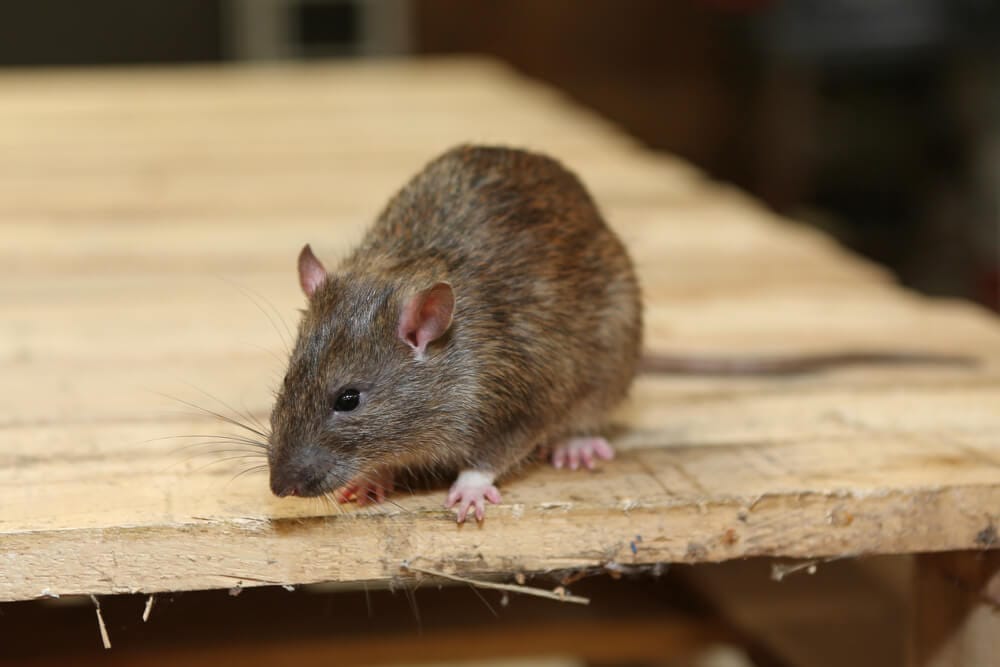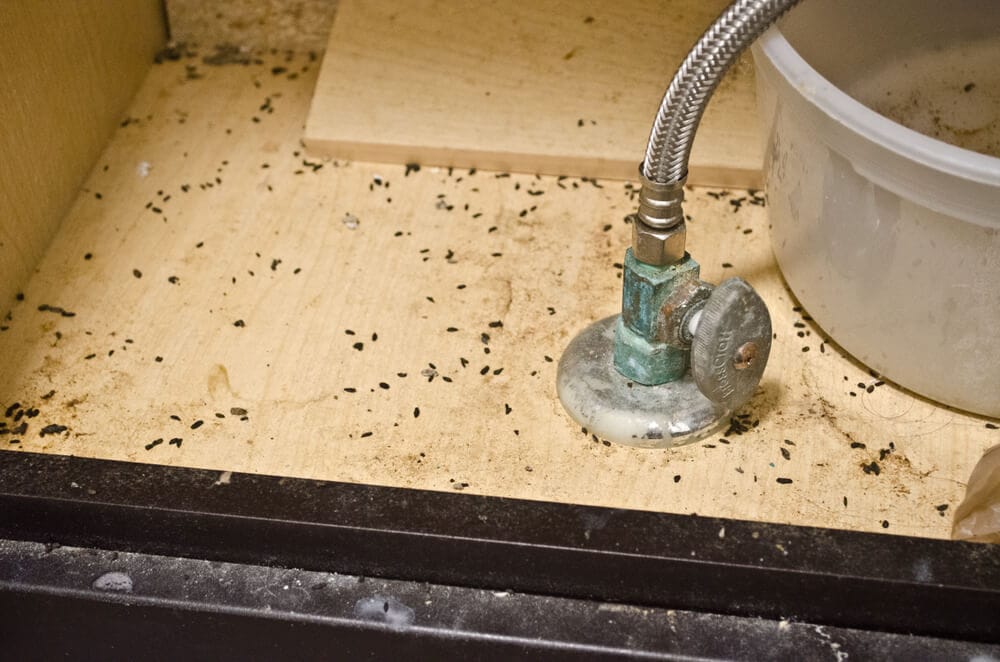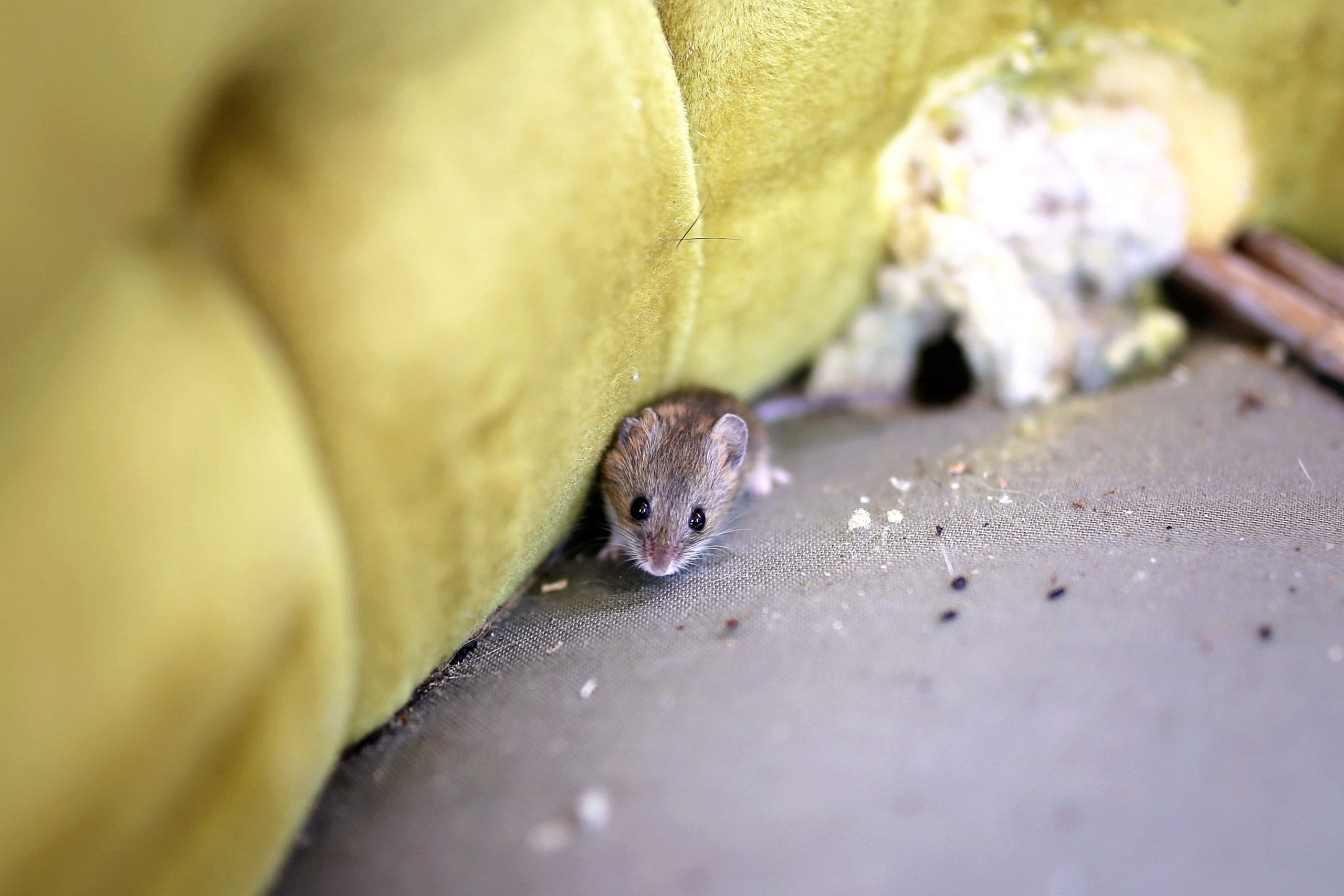Disease Spread From Mice to Humans Through Droppings
With colder weather setting in, rodents begin to seek shelter in homes, attics, and garages. Beyond the nuisance, they can bring in a much bigger danger: the spread of life-threatening diseases.
Rodents are linked to more than 35 human diseases (including Hantavirus Pulmonary Syndrome (HPS), according to the CDC, via urine, droppings, saliva, bites, and contaminated food or dust. Home and outbuilding cleanups are the primary exposure setting in the US.
Furthermore, the diseases they carry can spread in multiple ways, even without direct contact. While many understand the direct danger of having a live rodent infestation, the danger once rodents are gone is frequently underestimated.
Concerned about potential health risks from rodent infestations? Contact Spaulding Decon now for immediate assistance!
This is why it is key to get detailed information regarding the diseases mice carry and how to respond in situations where you suspect you have a rodent problem.
In this article, we go over important information regarding the health risks associated with mice and rat infestations. And we give you tips on how to stay on top of a rodent problem.
It is highly recommended that before you undertake any cleanup, you should air out closed spaces for 30 minutes, then disinfect dry droppings. Do not sweep or vacuum as that can aerosolize germs.
Ways Rodents Transmit Disease:
One of the most common ways humans get infected by rodent-related diseases is through contact with feces, urine, and saliva. Rodent droppings can be a severe threat, especially if handled by an inexperienced individual. Droppings can spread bacteria and contaminate food and the air. However, other ways contamination can take place include:
- Airborne transmission (aerosolized dust): Dry, contaminated droppings/urine/nests release harmful particles into the air when disturbed. Never sweep or vacuum before disinfecting.
- Direct contact: Touching contaminated surfaces and materials or droppings and then touching one’s eyes/nose/mouth can spread bacteria.
- Food and water contamination: Consuming food/water contaminated with rodent waste or urine can lead to infections, including the risk of getting leptospirosis.
- Rodent bites and scratches: Though rare, bites can introduce dangerous pathogens and heighten the risk of catching rat-bite fever (RBF).
- Parasites (fleas, mites, ticks): Rodents carry parasites that can spread diseases, including plague via infected fleas.
- HVAC and enclosed spaces: Nests/droppings in vents and dusty closed rooms can recirculate contaminated particles. You should always ventilate 30 minutes before carrying out any form of cleaning work.
If you attempt to clean up dry droppings on your own, you will likely stir them up, allowing for the diseases to become airborne. This increases the chances of getting sick from mouse droppings substantially. Once airborne, these diseases can spread rapidly and can become hazardous for everyone in the immediate vicinity.
If you identify droppings in your home, never attempt to clean them without proper protective equipment. It is highly recommended to contact a professional biohazard cleanup service to remove the risk of airborne contamination.
Unsure about the safety of your environment? Schedule a free consultation with our experts today!
Next, we cover some of the most common and dangerous diseases transmitted by mice and rat droppings.
Diseases From Mice
Hantavirus Pulmonary Syndrome (HPS): A Deadly Disease
Hantavirus Pulmonary Syndrome (HPS) is one of the most common but also one of the most dangerous diseases spread by mice. HPS is often fatal (in approximately 30% to 40% of cases) without prompt care. This disease is carried by the Peromyscus genus of rodents, also known as deer mice.
Deer mice are also one of the most common species of mice in the US. The first-ever case of Hantavirus infection was reported in 1993. Since then, hundreds of cases have been reported, with most exposures occurring during cleanup in homes/outbuildings.
Also worth noting is that there are different types of HPS. In the Americas, HPS types include Sin Nombre, Bayou, etc., while in Europe/Asia, the types are called HFRS such as Hantaan, Dobrava, Puumala, etc.
How Do Humans Get Infected?
People get infected by breathing contaminated air during cleanup, touching contaminated objects, then the face, bites, or eating contaminated food.

Symptoms of Hantavirus Infection
- Fatigue, fever, nausea
- Muscle aches (thighs, hips, back, shoulders)
- Vomiting, diarrhea, chills, and abdominal pain
- Severe cases: Respiratory failure due to fluid buildup in the lungs
Action: If you develop fever and shortness of breath after rodent cleanup, seek care urgently and tell your provider about possible hantavirus exposure.
If not acted on quickly, Hantavirus can develop into HPS (Hantavirus Pulmonary Syndrome). This often fatal pulmonary disease is characterized by shortness of breath and respiratory failure.
Unfortunately, there is no specific cure for a Hantavirus infection, aside from catching it as early as possible so that the patient can receive acute medical care. Regarding prevention, the best course of action is to eliminate the threat by limiting the chances of contact with rodents.
Regular pest control in areas frequented by humans is a must in order to minimize the chances of contact. Another thing to consider is inspecting your property thoroughly and sealing any cracks and crevices.
How Long Does Hantavirus Live in Droppings?
Viability depends on conditions (sunlight, humidity, temperature). Because dust can carry the virus, treat all droppings as potentially infectious and follow CDC cleanup steps.
Never assume old droppings are safe to handle—professional biohazard cleanup is the only way to eliminate the risk.
Lymphocytic Choriomeningitis (LCM/LCMV)
The Lymphocytic choriomeningitis virus (LCMV) is carried by the common house mouse (Mus musculus). Healthy people usually recover, but pregnant women and immunocompromised individuals risk severe illness. Some studies suggest 2–5% past infection in urban populations.
Approximately 5 percent of common house mice carry the lymphocytic choriomeningitis virus, but even other domesticated rodents, such as hamsters, can become carriers due to being infected by wild mice.
Symptoms of LCM Infection
- Fever and fatigue
- Severe headaches
- Muscle and joint pain
- Sore throat, chest pain, salivary gland pain
- Neurological complications (meningitis, encephalitis)
High-risk groups: pregnancy (risk of fetal infection), transplant recipients, and immunocompromised people. CDC has also documented pet-rodent–associated outbreaks.
LCMV fetal infections may result in congenital disabilities such as vision impairment, hydrocephaly, and many other mental conditions. Individuals exposed to the virus require immediate hospitalization and treatment to minimize repercussions.
If you suspect rodent activity in your home, immediate decontamination is crucial to prevent exposure.
Diseases from Rats:
Some of the most common diseases that can be picked up from rats include:
- Leptospirosis: Leptospirosis spreads via urine of infected animals (including rats) and can survive weeks to months in water/soil. Symptoms range from fever to kidney/liver failure. Floods increase risk.
- Seoul Virus (rat-borne hantavirus): Seoul virus (linked to Norway/roof rats) can cause fever and kidney disease. Outbreaks have occurred in North America among pet-rat facilities and internationally in recent years.
- Salmonella (feeder/pet rodent exposure): Handling feeder or pet rodents (or their bedding) has been linked to Salmonella outbreaks. Good hand hygiene and safe handling are essential.
- Rat-bite fever (RBF): RBF is caused by Streptobacillus moniliformis (US) and Spirillum minus (Asia). Transmission includes bites/scratches and contact with saliva/urine or contaminated cages/bedding. Untreated case-fatality ranges from approximately 7% to 10%. Antibiotics are effective when started early.
- Bubonic Plague: In the US, plague remains rare with an average of ~7 cases/year (range 0–17), mostly in the Southwest. Transmission is via infected rodent fleas.
How to safely clean up rodent droppings
Cleaning rodent droppings might seem simple, but in reality, it’s not. The cleaning specialists at Spaulding Decon highly recommend not approaching rodent droppings without adequate protective gear. Furthermore, it’s crucial to act quickly and remove the droppings from your property and reduce the chances of exposure to airborne pathogens.
Here’s a step-by-step list of actions you should take when facing such a problem:
- Ventilate: Open doors/windows for 30 minutes and leave the area.
- PPE: Wear rubber/plastic gloves and consider mask/goggles. For heavy/dusty spaces add disposable coveralls and consider respirators per local guidance.
- Disinfect first: Spray urine, droppings, nests with an EPA-registered disinfectant or fresh 1:10 bleach solution; soak ≥5–10 minutes.
- Wipe and bag: Use paper towels and double-bag waste, after which you should seal it.
- Hard surfaces: Mop/sponge with a disinfectant. Clean cabinets/drawers.
- Soft items: Steam clean or launder on hot. Dry on the highest heat allowed.
- Hygiene: Wash gloved hands with soap/water before removing gloves. Then wash hands again.
Here’s a quick list of do’s and don’ts that you should always bear in mind when attempting to perform a rodent or mice dropping cleanup yourself:
❌ Never:
- Sweep or vacuum dry droppings
- Touch waste bare-handed
- Eat/drink during cleanup.
- Ignore rodent droppings, assuming they are harmless
✅ Do:
- Air out for 30 min
- Wear PPE such as gloves plus eye protection/mask as needed
- Spray with an EPA-approved disinfectant to disinfect first
- Wipe and double-bag
- Wash hands
- Call a professional biohazard remediation company
Warning: Rodent droppings aren’t just a mess—they are a serious health hazard. Don’t risk exposure. Let experts handle the cleanup.
Need Safe Rodent-Dropping Cleanup?
Facing a rodent mess? Our certified biohazard teams handle rodent droppings, HVAC-adjacent dust, and perform deep disinfection according to CDC guidance. As a professional decontamination service provider, you can skip the DIY and call us to limit associated risks.
Remember: Different surfaces require different cleaning methods. While hard surfaces can be disinfected, soft fabrics like carpets and clothing trap bacteria and viruses. Learn how to properly clean mouse droppings from fabric or let professionals handle the job safely.
Facing a rodent problem? Our emergency response team is available 24/7. Call us now!

Frequently Asked Questions
No. Don’t vacuum or sweep urine/droppings/nests before disinfecting. This can aerosolize germs. Disinfect first, then wipe/bag. Consider pro cleanup for heavy infestations.
Make sure you wear a respirator with the proper cartridge for this type of job. Always wet down droppings, urine stains, nests, or contaminated surfaces first using a disinfectant or bleach solution — never dry-sweep or vacuum before wetting. This minimizes the risk of airborne dust that can contain the virus. Ensure a tight face seal with the respirator; facial hair, eyeglass arms, or loose straps can compromise protection. Wear gloves, eye protection, and protective clothing, and properly dispose of contaminated materials in sealed bags. Ventilate the area (open windows, doors) before and during cleaning, and avoid re-entering until aerosolized particles have settled and been cleaned.
30 minutes with doors/windows open. Leave the area during airing. Then wear gloves and start disinfecting.
Use an EPA-registered disinfectant or a fresh 1:10 bleach solution. Thoroughly soak droppings/nests for at least 5–10 minutes before wiping. As professionals we utilize shockwave made by Fiberlock.
Hantavirus (HPS) from deer mice and LCMV from house mice. Risk rises during cleanup in enclosed spaces (homes, sheds, cabins).
Leptospirosis (urine-borne, water/soil survival), RBF (bites/contact), Seoul virus (hantavirus from rats), and Salmonella (handling feeder/pet rodents).
It is rare but present with ~7 cases/year on average (0–17 range), mainly in the Southwest; spread by infected rodent fleas.
Get in touch with the pros at Spaulding Decon if you have heavy/dusty infestations, contamination of HVAC/air ducts, large nesting, or if anyone in the home is pregnant or immunocompromised. Pros follow CDC PPE/disinfection steps.
Avoid exposure and DIY cleanup. LCMV can cause severe outcomes in pregnancy; consult your clinician and use professional remediation.
Yes. After disinfecting and wiping, double-bag and seal waste for disposal per local guidance.
Air out 30 minutes, then disinfect before moving items. In heavy rodent activity, add protective clothing (disposable coveralls; consider respirator) or hire pros.
Rodent Droppings in Your Home?
Here are a few other resources to help you with the rodent droppings and their associated risks.




